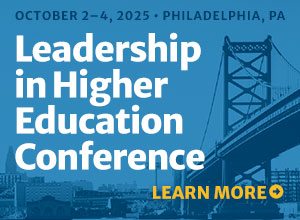“Our goal was to make sure students on campus understood that they would be working in a global environment,” says Karen Kashmanian Oates, Peterson Family Dean of Arts and Sciences at Worcester Polytechnic Institute. As scientists and engineers, WPI students are poised to enter a truly global marketplace, with companies headquartered outside the U. S. or requiring working in or with these other locations.
Constructing a strategic plan for global engagement that will benefit both students and the institution, however, requires more than a simple study-abroad program. In a presentation for the American Conference of Academic Deans (ACAD), Oates and her co-presenters explained the situation thus: “Without a strategic plan for global engagement in place, most interactions have been reactive instead of proactive, with engagements neither initiated nor coordinated with central university aspirations.” By constructing a strategic plan, the institution can help meet institutional goals.
The WPI experience
To construct its global initiative, WPI devised a series of global hubs of engagement. These hubs were chosen to maximize the student experience both now and for their future careers while taking advantage of institutional and alumni connections in these areas. In fact, each hub is chosen for its ability to engage and use the resources and contributions of students, faculty, alumni, government, and industry.
One hub is located in China, which is an emerging economy of great importance. WPI had connections to China through Microsoft and Google, plus other connections, such as an alumnus who is on the board of trustees of a canning corporation.
The second hub is located in Switzerland, perhaps not an intuitive choice at first glance. However, Switzerland holds valuable connections for the school. It is a natural and neutral gateway to Europe, with many internationally respected labs and life sciences corporations located within its borders or nearby in Europe. The country features a number of applied science schools and has a legacy of consulting and collaboration that makes it attractive to WPI.
The final major hub is in Panama, which Oates calls a “boutique” area for the university. Again, this area may not seem an intuitive choice for the university. However, the university does train a number of civil engineers who need to learn to deal with water issues, which Panama, with its canal and nearby oceans, deals with daily. Additionally, the university has a strong alumni base in Panama that offers a number of opportunities for engineering students and graduates.
WPI’s relationships abroad are not limited to these three countries. “Faculty relationships with other institutions have to be respected,” Oates says, explaining that faculty members often form international collaborations with colleagues in other countries that can lead to opportunities for students and the institution in general. “We’re now finding people to lead [efforts in] different areas,” she says. Additionally, the institution offers an International Scholar-in-Residence program that allows the institution to host international guests while allowing students exposure to different perspectives even if they don’t choose to study overseas. “It helps students understand their place as scientists and engineers to solve the world’s problems,” Oates says.
Identifying goals
In sum, constructing a strategic plan for global engagement requires that the institution be honest with itself about its plans for its global initiative. For some, this might be furthering a social goal and doing good for another culture. For others, it might be providing students with experiences to help them learn how science is practiced on a global stage.
According to Oates’s ACAD presentation, the Provosts Task Force on the Globalization of WPI identified the following three areas for the institution to explore:
- Incorporation of international education and cultural awareness into the heart of the WPI curriculum
- Developing meaningful and strategic relationships with a small number of targeted international sites that provide research and recruitment opportunities for [the institution’s] students and faculty, including new funding avenues
- Improving vital infrastructure, such as housing and telecommunication facilities, to support new initiatives
By focusing on these goals, the institution can more easily select new areas for involvement and be sure to engage both students and alumni in the opportunities they can find when their university is connected to the world.
Jennifer Patterson Lorenzetti, MS, is managing editor of Academic Leader and chair of the 2016 Leadership in Higher Education Conference. She owns the writing, speaking, and consulting firm Hilltop Communications.
Reprinted from Academic Leader, 31.9 (2015): 8. © Magna Publications. All rights reserved.



